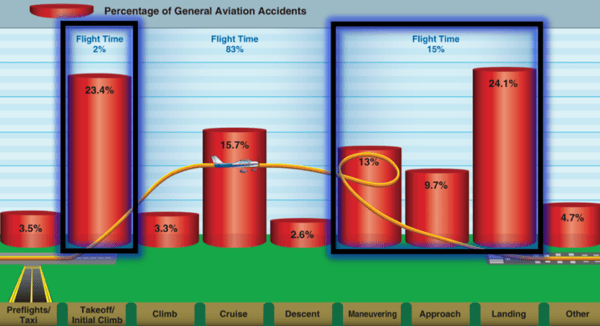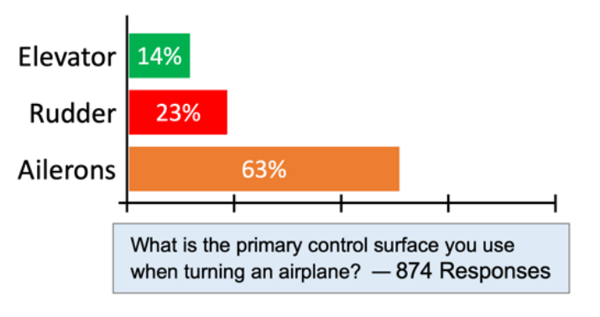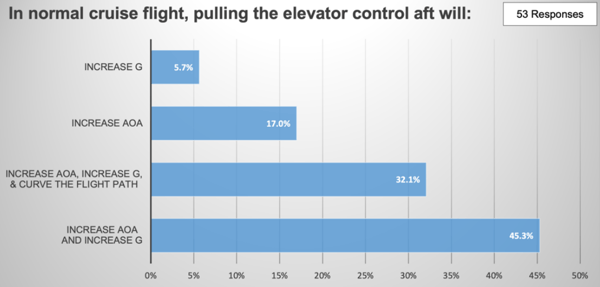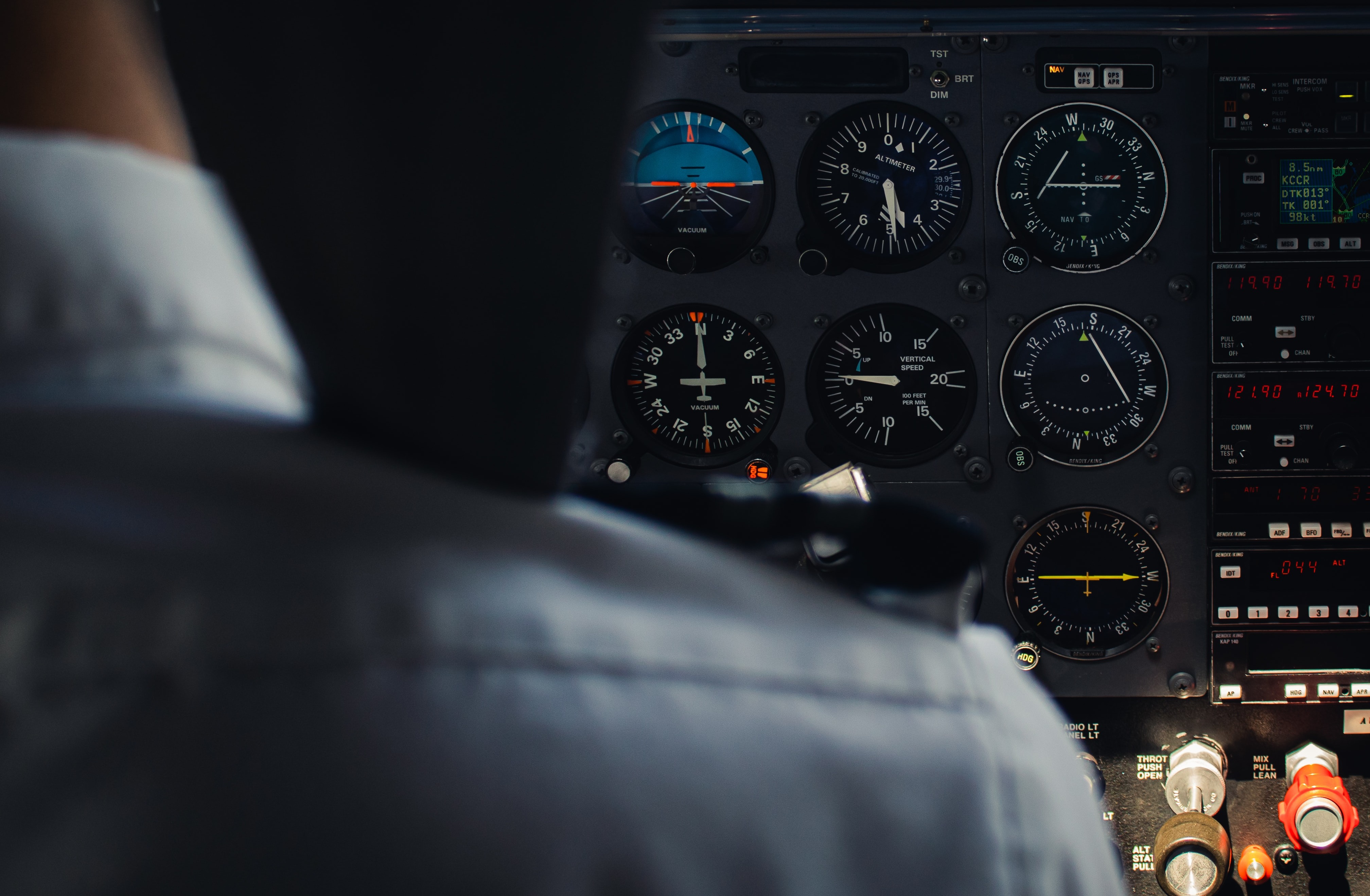Why Do So Many Aviation Accidents Occur During the Maneuvering Phase?
The Learn to Turn program is a fantastic way to complement and supplement your flight instruction. Download your free copy of the e-Booklet here.
Inflight loss of control (LOC-I) is the leading cause of fatalities in aviation. It dominates among homebuilts, in general aviation as a whole, and in the commercial jet fleet worldwide. For the period 2001–2010, the General Aviation Joint Steering Committee (GAJSC) found more fatal general aviation accidents resulting from LOC-I than from the next five occurrence categories combined1. Further, one-in-four of the fatal LOC-I accidents occurred during the maneuvering phase alone2.
The maneuvering, takeoff and initial climb, approach, and landing phases accounted for 64 percent of the fatal accidents3. Pilots spend just 17 percent of their flight time operating in these phases, yet this is where 70 percent of all aviation accidents take place4. Compared to cruise flight, these phases involve higher angles of attack (AOA), greater potential for distraction, and more opportunities to mishandle the controls.

Accordingly, LOC-I has been a focus not only of FAA Safety Stand Downs but also of NTSB’s Most Wanted Lists. NTSB also hosted the forum, Humans and Hardware: Preventing General Aviation Inflight Loss of Control to discuss, among other topics, pilot training solutions and equipment and technology solutions.
Stubbornly Recurrent
NTSB Member Earl Weener has called LOC-I a “stubbornly recurrent safety challenge.” Stubborn indeed. Consider these observations, for example:
- 1944: “Almost all fatal flying accidents are caused by loss of control during a turn.”5
- 1973: Turning flight preceded at least 60 percent of fatal stall-only accidents.6
- 1980: “Many pilots do not reach a complete understanding of what makes an airplane turn. Such an understanding is certainly worthwhile, since many accidents occur as a direct result of losing control of the airplane while in turning flight.”7
- 1993–2001: Twenty-seven percent of all fatal accidents and 41 percent of fatal stall/spins
occurred while maneuvering.8
“Every one of these pilots who has spun in was a product of the system, the product of a
certificated instructor.”9 What is it about maneuvering flight that has entrenched it as a top cause of fatal LOC-I for so long?
Flawed Assumptions
While attempts to improve stall/spin awareness and encourage technologies to reduce LOC-I certainly have merit, what if the underlying issue is more basic than that? We naturally assume pilots are competent at turning. After all, turning is fundamental to flying. Turns are introduced practically on day one of flight training. Pilots do turns all the time. But if pilots thoroughly understood and were competent with turns, why do some intentionally skid into a spin when overshooting the turn to final? Botch their attempt to turn back the runway following engine failure on takeoff? Lose control during low-level survey and patrol operations? These pilots actively drove their loss of control by applying precisely the inputs necessary for a stall/spin.
We have been teaching turns the same way for decades, with the same results. Perhaps it is time to critique the methodology. As part of several safety programs, for instance, nearly 900 pilots responded to the question, “What is the primary control surface you use when turning an airplane?”
Sixty-three percent chose ailerons; 23 percent, rudder; fourteen percent, elevator. Eighty-six
percent did not recognize “elevator” as the correct answer. Nearly one-in-four believed rudder turns the airplane—a shocking finding considering the FAA’s decades-long efforts to inform pilots that rudder does not turn the airplane.10 The 2016 edition of the Airplane Flying Handbook, for example, mentions the use of rudder during turns at least four times.11
A different question was posed to those attending an FAA Wings webinar in 2021: “In normal cruise flight, pulling the elevator control aft will...” Fifty-three pilots chose one of four options:
- Increase G
- Increase AOA
- Increase AOA, increase G, and curve the flight path
- Increase AOA and increase G

Only about one-third said pulling the elevator control aft would increase AOA, increase G, and curve the flight path. Forty-five percent said it would increase AOA and increase G, but did not correlate this with curving of the flight path. One-third of the respondents had logged 101–500 hours of flight time, nearly one-fourth had 1,001–3,000 hours, and one-fourth had more than 3,000 hours. Regarding the type of flying they generally did, eighty-six percent selected “Personal GA.”
Skill Retention
“The retention of pilot flight skills is a critical factor in the overall safety and efficiency of general aviation operations.”12 Furthermore, “Having unrealistic expectations about your training level and, more importantly, your training retention level, is a major error.”13 One study, for example, quantified the degradation in flying skills of a group of private pilots.14 The study period began with the private pilot checkride and ended 24 months later. The top seven skills exhibiting the greatest composite degradation follow:15
- Landing (non-towered field)
- Traffic pattern (non-towered field)
- Short field landing
- Accelerated stall
- Steep turns
- S-Turns across a road
- Turns around a point
Skills 1–3 can be categorized as “pattern operations,” while skills 4–7 can be categorized as “turning flight.” The tasks that exhibited “relatively large amounts of skill loss over the two-year retention period all are operationally critical. Their importance stems from the fact that some (e.g., landings on short runways or at uncontrolled fields) are of direct use in operational settings, while others (e.g., ground reference maneuvers) are more abstract and involve basic skills that underly the execution of the former tasks.”16 The ability to judge and manage pitch rate, for example, is central to landing. The transition from descending to leveling off just above the runway is about vertical turn management; so, too, is holding off the airplane without ballooning.
Pilots are taught to mimic basic and mostly level turns. Many never progress to the application or correlation levels of learning vis-à-vis the whole maneuvering flight envelope. The importance of cue development typically is not emphasized during training, either. “Instead, cues more often are learned unsystematically through experience.”17 Unguided experience often leads to attaching significance to wrong or irrelevant cues. For instance, when quizzed while in a level turn, pilots routinely fail to identify the elevator as the control they are using at that moment to bend the flight path. The most obvious cue—and the one to which pilots attach undue significance—is bank angle. This supports the observation that pilots “do not know what makes an airplane turn.”18
Details matter, yet a lot of pilots—including CFIs—are unable to explain various maneuvers by accurately positioning the control surfaces on a model airplane. Some are hesitant—in some cases, they flat out refuse—to see a loop as a variant of the level turn.
Evidence suggests the flight training industry long ago succumbed to the twin demons of
complacency and perceived competence.19 We have been complacent about the way we teach turns, thereby leaving pilots with a false sense of competency. The result is often a pilot who “possesses basic flying skills but lacks satisfactory understanding of aircraft performance and its underlying principles.”20 Deficiencies in knowledge and experience are magnified during critical flight operations such as takeoff and initial climb, maneuvering, approach, and landing. Absent better awareness about turn dynamics, the ability to prevent or recover from LOC-I will continue to be compromised.
Technology
We tend to be quick to assume that technology is the best solution to the LOC-I problem. Some point to the approach to technology taken by the military and the airlines as a model for general aviation. Airline and military flight environments, however, are highly structured; the pilots [are] selectively chosen, extremely well trained, and actively engaged in continuous recurrent training and evaluation. Technology applied in that context would be expected to enhance already superior levels of knowledge and skill.
In contrast, general aviation is far less structured. It has a significantly larger pilot population. It is open to anyone who can meet minimum (and varying) standards of skill and precision. Recurrent training is largely optional. Contact flying is the norm (i.e., daytime visual flight rules [VFR] in visual meteorological conditions [VMC] using outside visual references). Add in known deficiencies in knowledge and skill about turning flight and it is unlikely the full benefits of purely technological fixes will be realized.
When used appropriately, technology certainly can reduce accidents. It is most effective when it complements superior skills; less so if used as a crutch or band-aid to cover weaknesses in skills. “Despite all the changes in technology to improve flight safety, one factor remains the same: the human factor which leads to errors.”21 In the context of general aviation flying, usually “it is not about the hardware, it is about the ‘software’”—the pilot at the controls.22
Endnotes
- FAA, GAJSC Accident Data Set.
- Ibid.
- Ibid.
- FAA, Pilot's Handbook of Aeronautical Knowledge, FAA-H-8083-25A, 2008, 17-2.
- Wolfgang Langewiesche, Stick and Rudder (New York: McGraw-Hill, 1944), 190.
- Brent W. Silver, Statistical Analysis of General Aviation Stall Spin Accidents, SAE 760480 (SAE, 1976), 5.
- Pilot's Handbook of Aeronautical Knowledge, EA-AC 61-23B (Basin, WY: Aviation Maintenance Publishers, Inc., revised 1980), 30-31.
- AOPA Air Safety Foundation, Maneuvering Flight - Hazardous to Your Health? Safety Advisor, Operations & Proficiency No. 8, 2005, 1, 5.
- Langewiesche, 345.
- See for example, Flight Training Handbook, AC 61-21A, revised 1980, 62; Pilot's Handbook of Aeronautical Knowledge, 1980, 31; Airplane Flying Handbook, 2004, 3-7 & 3-8; Pilot's Handbook of Aeronautical Knowledge, 2008, 4-19.
- FAA, Airplane Flying Handbook, 2016, 9-7, 3-11, 3-12.
- Dr. David Hunter, A Guide for the Conduct of Biennial Flight Reviews, FAA, Draft May 1999, 7.
- Trevor Thrasher, "Stress Proofing Skills," Breach Bang Clear, July 31, 2017, accessed April 26, 2021 at https://www.breachbangclear.com/stress-proofing-skills/.
- See Jerry M. Childs, William D. Spears, and Wallace W. Prophet, Private Pilot Flight Skill Retention 8, 16, and 24 Months Following Certification, Embry-Riddle Aeronautical University, July 1983, and Hunter, A Guide for the Conduct of Biennial Flight Reviews. Though the pilots were considered "relatively inexperienced," they were likely at or near the peak of their proficiency when the study commenced, i.e., at the time of their private pilot checkrides.
- Hunter, 8. The composite ranking was the average rank of the error rate at 24 months, the increment in the error rate from the checkride to the 16-month check, and the increment in the error rate from the checkride to the 24-month check. The composite was used since it represented more aspects of performance. All checks were done relative to private pilot checkride performance.
- Childs, Spears, and Prophet, 33.
- Ibid., 36.
- Langewiesche, 190; Bill Thomas, Fly for Fun, 1985, 12.
- Tony Kern, Blue Threat —Why to Err is Inhuman (Colorado Springs: Pygmy Books, 2008), 57.
- Juan R. Merkt, Flight Energy Management Training (Journal of Aviation Technology and Engineering, 3:1, 2013), 34.
- FAA, Pilot's Handbook of Aeronautical Knowledge, 2008, 17-2
- Lt. Col. Dave Grossman with Loren W. Christensen, On Combat (Warrior Science Publications, Third Edition, 2008), 212.
Share this
You May Also Like
These Related Articles

Secondary Instrument Scans for VFR and IFR Flight

Challenge Extra Credit: UND Lazy Eights
